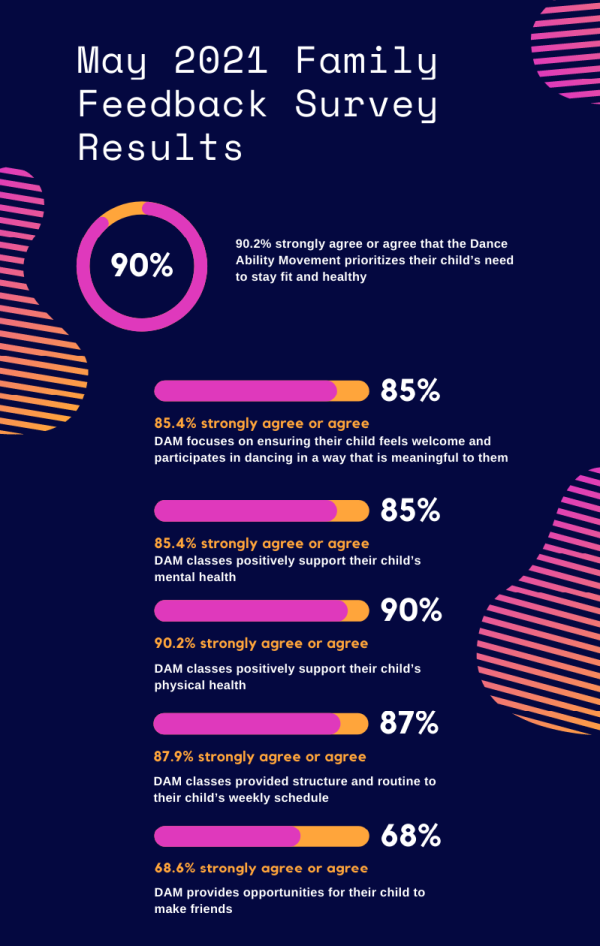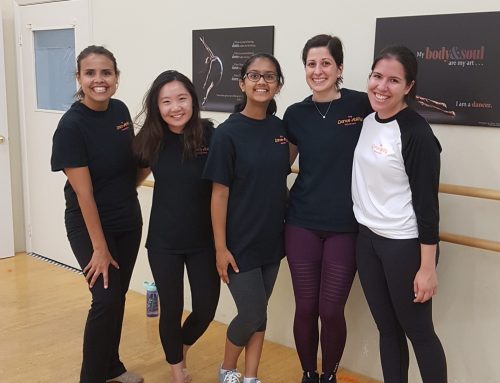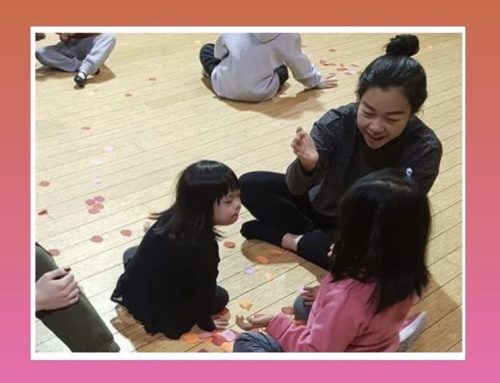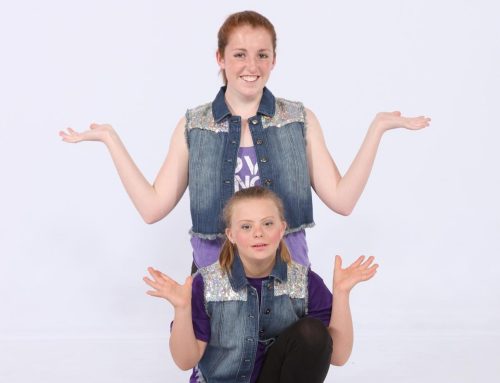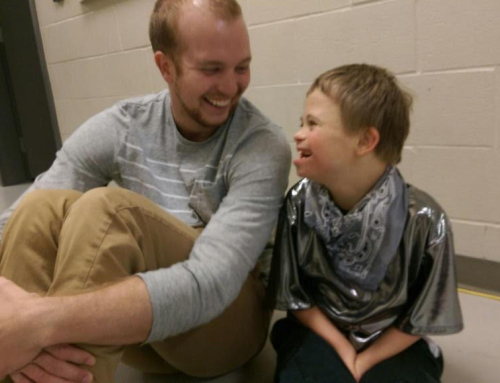With the COVID-19 outbreak, the Dance Ability Movement team had to challenge themselves to think outside-the-box to design and offer virtual programming to their dancers in an engaging, inclusive and fun way. “We worked hard to consider how our dancers and families might feel about virtual dance classes, and created resources to support a smooth transition – clarifying that the expectation was simply to try to connect, offering support for families who may have difficulty getting online”, says Mallory Ryan, The Dance Ability Movement Director of Quality & Development.
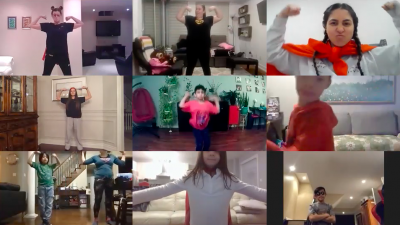 Since this was the first time DAM has offered online dance classes, we wanted to make sure our dancers and their families were still having a meaningful experience as well as feeling supported. Therefore, a program evaluation was completed by two student Occupational Therapists from the University of Toronto in June 2021. Data was collected through a literature review, meetings and surveys with different team members, and feedback from dancers and their families.
Since this was the first time DAM has offered online dance classes, we wanted to make sure our dancers and their families were still having a meaningful experience as well as feeling supported. Therefore, a program evaluation was completed by two student Occupational Therapists from the University of Toronto in June 2021. Data was collected through a literature review, meetings and surveys with different team members, and feedback from dancers and their families.
COVID-19 has had a large impact on the physical and mental health of children with disabilities. The literature suggests that inclusive programming can be a useful way to be proactive against these negative health consequences on children (Dinold & Zitomer, 2015). With DAM’s programming moving to a virtual platform (read more here), the DAM team was able to design programming beyond the online dance classes, providing dancers with virtual social event opportunities and facilitating social interaction during the COVID-19 pandemic.
These social events included a variety of themes such as Cinco de Mayo dance party and Disney-themed weekly socials, the socials averaged 25-30 dancers as well as volunteers and facilitators. Verbal feedback and survey data indicated that the virtual social events were a hit. Dancer’s reported, “it was really fun!”, “this is the best”, and “this is awesome”. As a result of the positive feedback received from dancers and family about the socials, DAM has continued to provide these free social events for their dancers and continue to have 25-30 dancers attending weekly.
Other positive outcomes that resulted from this transition to virtual classes was DAM’s increased presence and use of social media platforms, as well as increased community partnerships through the offering of virtual workshops.
Future directions for DAM
As a result of the findings of the program evaluation, DAM has continued to offer virtual socials to allow dancers to connect with the DAM community. Based on the feedback received, DAM is gradually returning primarily to in-person classes, but given the success of the virtual programming, has implemented a hybrid model whereby virtual classes will continue to be made available in addition to in-person classes.

